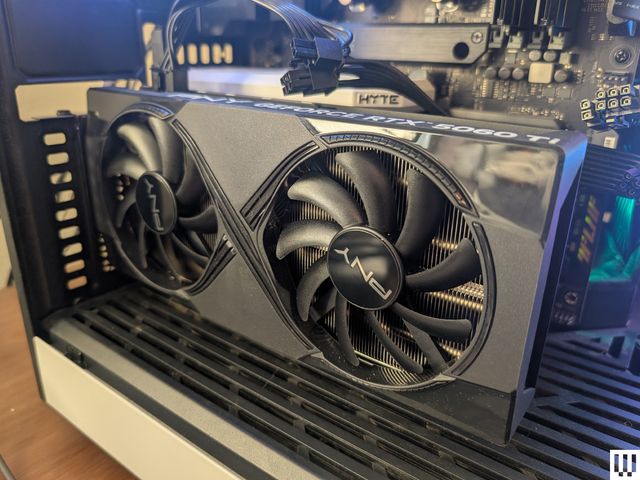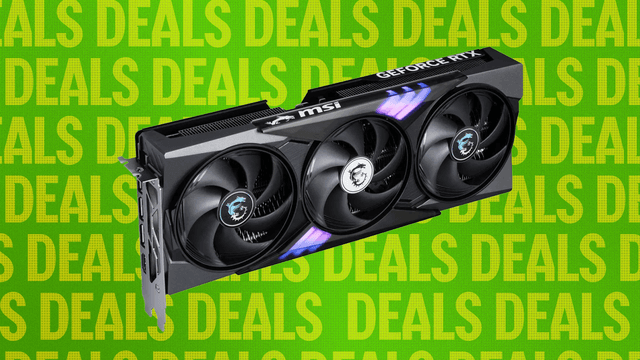The Best Graphics Cards (GPUs) for Gaming
All products featured on WIRED are independently selected by our editors. However, we may receive compensation from retailers and/or from purchases of products through these links. Learn more.
If you've been holding off on upgrading or building a new gaming rig, it's time to start looking again. The latest RTX 50 Series cards from Nvidia push high-refresh 1440p and even 4K performance, and AMD is leading the more budget-friendly range with the RX 900 Series. You have no shortage of options, and availability is much better than it was even a few months ago.
I’ll walk through some general buying strategy, show off my favorite graphics cards, and talk about why you might want to spring for something premium. Want to learn more about building a PC? Be sure to check out our full how-to guide, as well as our guide to the Best RAM and Best Power Supplies.
Updated July 2025: We've added information about the new Radeon RX Series GPUs and added more budget offerings. I no longer recommend previous-generation GPUs, due to better availability and pricing in the latest generation.
Make a Budget
The first question to answer is how much you’d like to spend, both on the GPU itself and your entire system. Depending on your use case and the games you play, you’ll want to consider spending anywhere from one-third to one-half of your system’s total price on the GPU.
Expect to spend at least $300, and as much as $1,500 for a nicer card. Once you know how much you want to spend, that will inform the base GPU model you’re looking for. For
Understanding Variations
There are a few major factors to consider that will help guide you toward your perfect new graphics card. It’s important that even though the two big players are Nvidia and AMD, you generally don’t buy products directly from them.
Instead, manufacturing partners buy GPUs from the two chipmakers, mount them onto PCBs, and attach custom coolers. That means you’ll see cards from brands like Asus, Gigabyte, and MSI with similar coolers and setups for both Nvidia GeForce and AMD Radeon GPUs.
There generally aren’t huge gaps in actual performance between different manufacturers; instead, the differentiators are largely under-the-hood improvements. These can include custom cooling solutions, PCB layout and strength modifications, and quality of the components used to complement the GPU.
You’ll also often see OC (overclocked) models listed alongside their standard counterparts. These graphics cards have the same GPU at their core, but with firmware and BIOS changes that set them to a higher clock rate to eke out additional performance. How much that overclocking matters will depend on the brand.
Dimensions
If you’re upgrading an existing system, make sure the card will fit inside your case. Most graphics card and case manufacturers list precise dimensions in millimeters to help you sort this out. Card widths are usually measured in “slots” or the number of PCIe bracket spaces they take up, so you’ll also want to make sure your case has enough free slots, and no other PCIe cards will be in the way.
The other side of the size coin is temperature control and noise. While smaller cards can fit in smaller cases, they also typically have shorter footprints with fewer fans, which can increase both running temperature and fan noise. If these are key factors for you, consider a larger card with more fans. Some cards even have a “zero rpm” mode where the fans shut off completely under a certain temperature threshold.
The Latest Generation
As launch excitement has died down, most of the cheaper and midrange GPUs have become readily available at major retailers. The higher-end cards like the RTX 5080 and RTX 5090 may still take a little bit of patience, but with everything else on shelves, I'd opt for either an RTX 50 Series or RX 9000 Series card.
While I'd previously shared some picks from the previous generation of GPUs here, I don't think they're a good value anymore. The biggest appeal here was just availability, and since there are plenty of midrange cards from the latest generation on shelves now, it's worth buying one of those the moment you hit $300. I'm able to find 16-GB RX 9060 XT offerings for as low as $360, and it's well worth saving what amounts to a single AAA game in cost for that much of a graphical boost.
Even under $300, there aren't that many compelling options, and I think you'd have to have a good reason for buying a card at that price point anyway, like specific hardware or software compatibility. Especially considering how good game streaming services and handheld consoles have gotten, that's probably a better use of your cash if you're limited by budget.
Buying Used
When it comes to GPUs, I prefer to buy new if possible. Not only will that ensure you have proper warranty and RMA support if something goes wrong, but it can be hard to know if someone misused the GPU, either through heavy crypto mining, poor temperature control in their system, or artifacts and issues they didn't disclose. I'm often a fan of buying used in other areas, but with demand and prices so high, it can be hard to trust strangers.
If you do buy used, make sure to do your legwork. Local meetups via Craigslist or Reddit can have great deals and give you a chance to inspect the GPU, even if you can't make sure it boots up. You can also ask for video proof of the card running a game that also includes the serial number in one continuous shot. If you’re considering buying a used card online, make sure you’re aware of the marketplace and payment processors' return and dispute policies.
When you get the card home, inspect it immediately for any damage to the card, particularly on the PCIe fin and the power connectors. Once installed, a software tool called GPU-Z can verify the card’s hardware to make sure it matches the expected numbers for the model. Run some games on it right away, so that if anything is wrong you can reach out to the seller right away.
Honorable Mentions
The Best High-End Graphics Card:
Nvidia GeForce RTX 5090 (7/10, WIRED Recommends): You'll have to spend at least $2,500 for the top-end offering from Nvidia, not to mention the other parts to complement it, and that's if you're lucky enough to find one in stock. I don't think most people will need anywhere near this much power, and that $1,000 difference between this and the RTX 5080 can go a long way toward a more balanced system. Still, you can check out my review if you want to know how the 1 percent game.
Another Mid-Tier Option:
Nvidia GeForce RTX 5060 8GB: I tested this card for the RX 9060 XT review, but there's only an 8-GB model. It performed well at 1080p but fell behind the similarly priced Radeon option at 1440p and in newer, more demanding games. I'm working on a full review, but for now, I'd recommend the Radeon instead if you're trying to stay under $400.



-Reviewer-Photo-SOURCE-Brad-Bourque.jpg)
-Reviewer-Photo-SOURCE-Brad-Bourque.jpg)




















